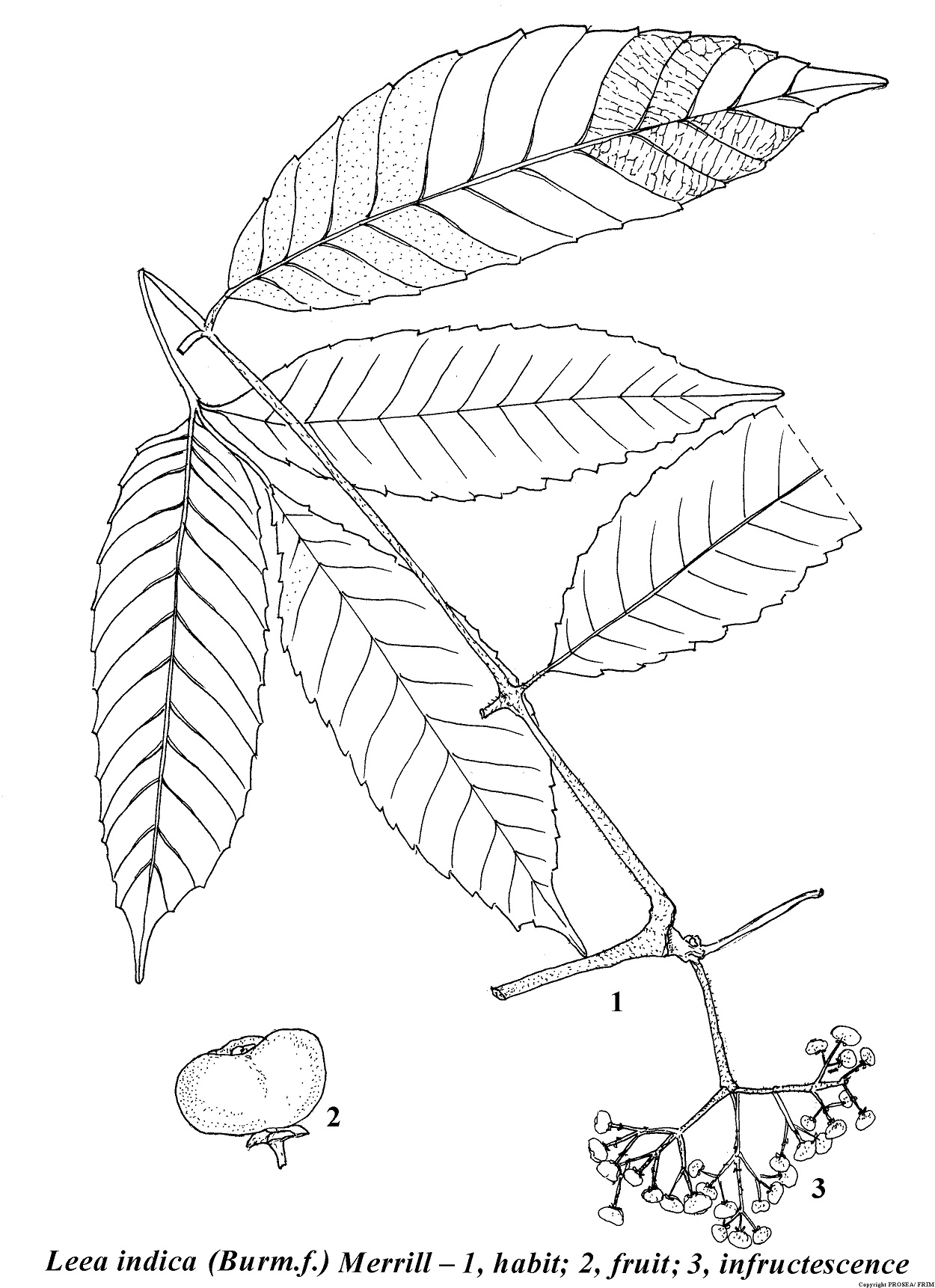Leea indica (Burm.f.) Merr.
Family
Leeaceae
Synonyms
Leea sambucina (L.) Willd., L. gigantea Griff., L. sundaica Miq.
Vernacular Names
| Malaysia | Mali-mali, merbati padang, jolok-jolok (Peninsular). |
| Indonesia | ki tuwa (Sundanese), kayu tuwa (Javanese). |
| Papua New Guinea | paikoro (Gunantuna, East New Britain), dadoro (Garara,Oro Province), warawa (Navuapaka, Central Province). |
| Philippines | mali (Tagalog), amamali (Bisaya). |
| Thailand | katangbai (northern, Bangkok, south-eastern), bangbaai ton (peninsular). |
| Vietnam | c[ur] r[oos]i den. |
Geographical Distributions
Leea indica is occur from India, Sri Lanka, throughout South-East Asia, to northern Australia, Solomon Islands, New Hebrides and Fiji.
Description
L. indica is a shrub, treelet or small tree which is measuring 2-10(-16) m tall, with many- or single-stemmed, frequently stilt-rooted while its stems are smooth to pubescent.
The leaves are (1-)2-3-pinnate, 7-numerous leaflets, with a size of measure (6-)10-35(-60) cm long rachis and with (6-)10-25(-35) cm long petiole. The obovate stipules are up to measure 6 cm x 4 cm, early caducous, usually hairless, ovate-oblong to ovate-lance-shaped or elliptical to elliptical-lance-shaped leaflets, with a size of measuring (4-)10-24(-45) cm x (1-)3-12(-20) cm, wedge-shaped base to rounded, acute to acuminate apex, serrate to shallowly dentate margin, with small pearl-glands, inconspicuous and rapidly caduceus. The cyme is measure about (5-)10-25(-40) cm long, usually lax, sometimes compact and hairless to pubescent. The bracts are deltoid to narrowly triangular that up to measure 4(-8) mm long.
The flowers are greenish-white, measuring about 2-3 mm x (2)3-4 mm sepal and they are smooth to pubescent. The staminodial tube is measure about 2-2.5 mm long which the upper free part is about 1-2 mm long, shallowly retuse lobes, notched or cleft and shallow sinuses. The ovary is (4-)6(-8)-celled.
The purple-black berry is measure 5-10(-15) mm in diametre and it is 6-seeded.
The seed is with a size measure of 5 mm x 4 mm.
Ecology / Cultivation
L. indica is widespread and common in primary and secondary forest, and around villages (often coppiced), in wet areas as well as ridges, from sea-level up to 1700 m altitude.
Line Drawing / Photograph
References
- Plant Resources of South-East Asia No. 12 (2): Medicinal and poisonous plants 2.



